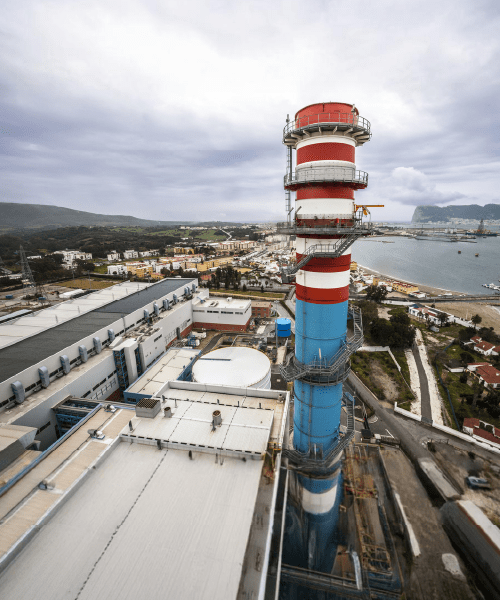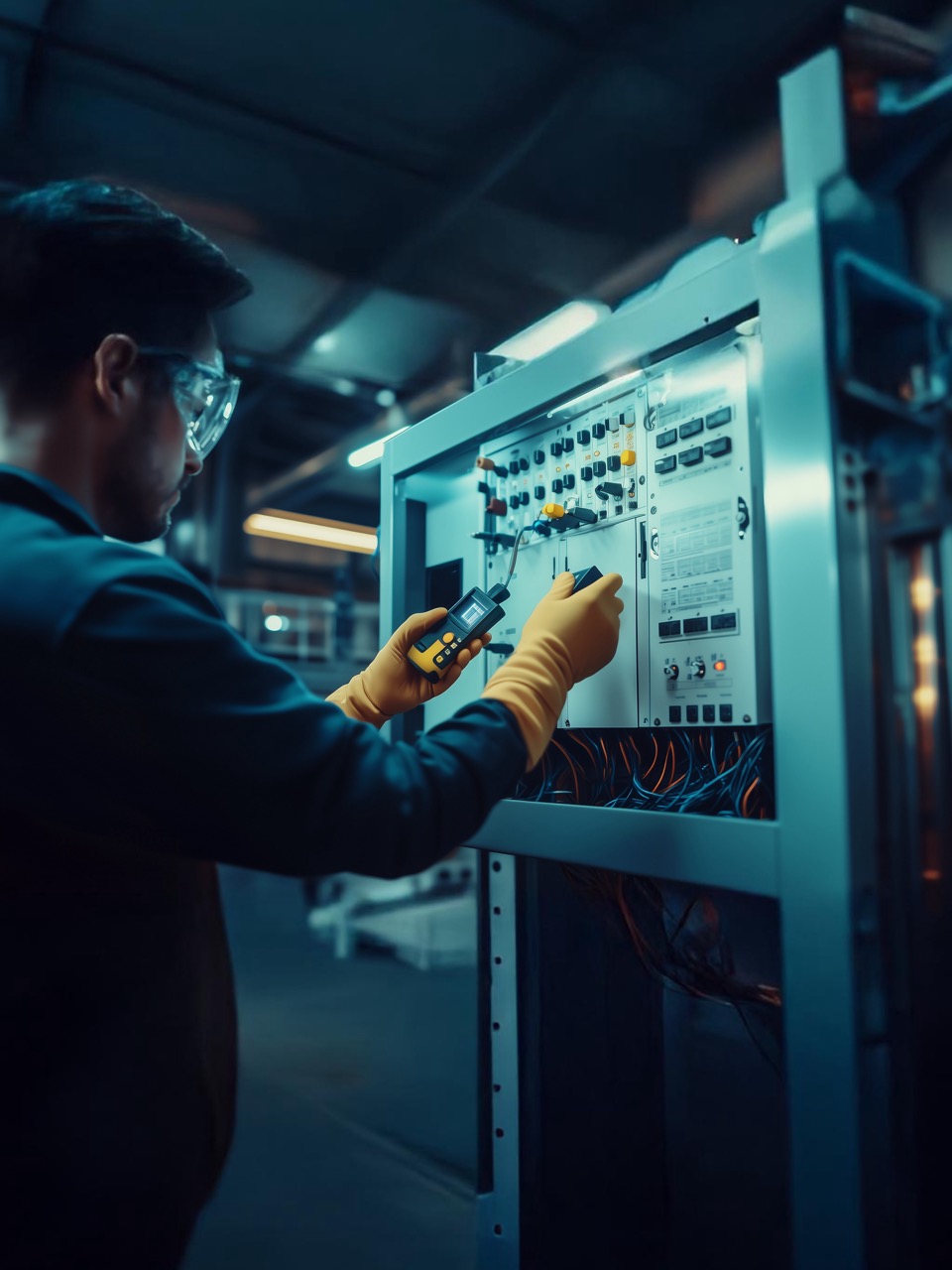Gas turbine
Gas turbine
From combustion to cogeneration
From combustion to cogeneration
Do you know what a gas turbine is? And why it is able to generate both energy and useful heat, which can in turn be converted into electrical energy. This technology is widely used for energy generation because of its capacity to respond to the energy demand quickly and because of its efficiency. Moreover, they contribute to the circular economy by using residual heat and using it for the cogeneration of energy. We tell you what it consists of and how this high-performance energy production system works.
What is a gas turbine and what is it for?
What is a gas turbine and what is it for?
A gas turbine is a motor that, from a fuel (a gas, normally natural gas) generates mechanical energy. The energy produced can be transformed into electricity through an alternator or be used to drive mechanical systems. Basically, the gas turbine has three main components: the compressor, combustion chamber, and the turbine itself. Its main function is to convert the energy that a fuel stores into useful energy through a process of controlled combustion.
In the energy sector, gas turbines are used to generate energy efficiently through the transformation of mechanical energy into electricity. The heat produced in the combustion process is harnessed, moreover, to heat water in a recovery boiler. In other words, it produces what we know as cogeneration of energy, since that resulting hot water in turn generates steam or thermal energy, which in turn can be used in production processes and/or to produce electricity.
Because of their efficiency and characteristics, gas turbines have become a widely used alternative to meet energy demands in a way that contributes to the circular economy. We explain to you how they work.
How does a gas turbine work?
How does a gas turbine work?
The gas turbine releases energy through the compression and combustion of gasses, and this energy is transformed into the movement of the turbine's blades. Firstly, the gas turbine inhales air from the atmosphere and compresses it at high pressure in the compressor, which makes its temperature and density increase and thus more prone to combustion. This compressed air is mixed with the fuel (usually natural gas) in the combustion chamber.
This combustion generates hot gasses at high pressure, which quickly expand and pass through the turbine's blades, which produces their rotation. This movement generated by the gas produces mechanical energy, which an alternator transforms into electricity.
This process also results in residual gases, which can be expelled outside through the exhaust system or, in a cogeneration system, be used to heat water or generate steam in other industrial processes, which enables the harnessing of the thermal energy generated. In this way, the system is more efficient and adapts better to the circular economy principles.
Advantages of a gas turbine
Advantages of a gas turbine
Gas turbines have several advantages. We tell you about them:
- They are highly efficient.
As a result of this cogeneration process, gas turbines can achieve high efficiency: fewer energy resources are wasted. - They can respond quickly to the market's energy demands.
This technology responds quickly on start-up and shutdown, which allows to quickly supply "peak" energy during periods of high demand. - Less amount of gas emissions to the atmosphere.
Modern gas turbines currently emit some amounts of nitrogen oxide (NOx) and carbon dioxide (CO2) that are much less than in the past, thanks to innovation in combustion technology. - Less thermal waste.
By reusing residual heat in energy cogeneration processes, gas turbines are efficient with regard to the resources they need and waste of thermal energy, which allows their inclusion within the concept of circular economy. - Very diverse uses.
As well as for energy generation, gas turbines have many other applications, such as to propel aircraft, boats, or trains or being used in the industrial sector.
What fuel is used in a gas turbine?
What fuel is used in a gas turbine?
Although other fuels can be used, such as diesel or biogas, natural gas is the one that is most commonly used in gas turbines, since it is an abundant fuel with a relatively low cost. In one of the multiple applications of its products and services, Repsol also supplies natural gas for power plants that operate with gas turbines, which are key today for energy production.
Moreover, we develop and market high-performance lubricants for gas turbines that considerably prolong the useful life of these technologies. In this way, our company contributes to promoting increasingly more efficient solutions, in continuous process of innovation, for energy generation.
Moreover, the design of gas turbines makes them one more piece of the circular economy, by facilitating the cogeneration of energy. This translates into a lower consumption of raw materials and fewer carbon dioxide emissions to the atmosphere.


